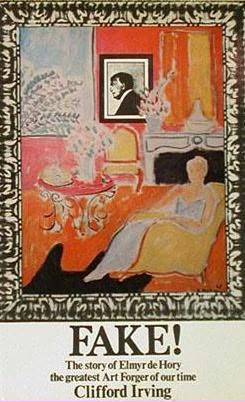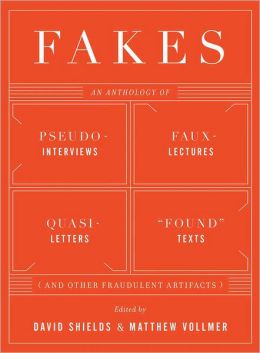
Because April 1, the day known as April Fools’ Day or All Fools’ Day—along with May Day—is my favorite holiday, I have often wondered how it has escaped the commercialization or monetization that accompanies almost every other holiday in the calendar of American events. Not that I am complaining; absence of corporate sponsors adds a patina of purity (like college sports once had, before big money and the NCAA corrupted the notion of amateurism).
A cursory study of April Fools reveals that the idea of a prank day is culturally ubiquitous and can be found in early civilizations. A Roman version was a festival known as hilaria, an appellation that has an agreeable ring to it. My own affinity for the day that celebrates pranking, hoaxing, and deception has to do with a predilection possibly pathological, which is to “stick it to the man,” or maintain an eternally tumescent middle finger to wave in the face of authority.
But more than non-conformity, the history of trickery contains an ample reserve of good stories, and when one thinks of it, an impulse for deception is the heart of much literature. I am not aware that anyone has compiled a bibliography of chicanery, and I suppose that’s because subterfuge is so prevalent in literature. Also, a curious feature of contemporary life—expressed in a cliché of our time—is “Truth is often stranger than fiction.” See if you can distinguish between headlines from The Onion versus actual recent headlines:
• “Nearly 100 cars crash on a fog bound stretch of highway I-77 near the VA/NC line”
• “Mystery Malady Kills More Bees, Heightening Worry on Farms”
• “Google Insults Cesar Chavez”
• “Normal life of serial rapist Gary Irving is over; agrees to return to Massachusetts after 34 years on the run”
• “Fallen Firefighter Remembered As Idiot Who Sucked At His Job”
• “15th Seed Florida Atlantic makes it to Final Four”
• “Trump seeks damages in ‘cybersquatting’ case”
• “The Eiffel Tower is Evacuated, Again”
• “Ayman Al-Zawahiri Delivers TEDTalk on Changing Face of Terrorism”
• “At Banks, Board Pay Soars Amid Cutbacks”
• “White Supremacists Under Scrutiny in Texas Slayings”
And on and on.
In the 20th century, we have had some standout hoaxes, such as H.L. Mencken’s bathtub hoax where, in a piece entitled “A Neglected Anniversary,” he bemoaned the fact that the 75th anniversary of America’s introduction to the bathtub had been completely ignored. Or 1938’s War of the Worlds broadcast, which holds the unofficial title as the best deception of the modern era. In the 1950s, the dignified science of archeology suffered some loss of credence by claims of The Piltdown Man as an authentic link in the evolution of homo sapiens.


Recent years have also seen some outstanding hoaxes—Clifford Irving’s purported biography of reclusive rich guy Howard Hughes and the 1983 discovery of Hitler’s diaries actually certified by a highly respected historian. Binjamin Wilkomirski’s Fragments (1996) was a holocaust memoir that won a number of awards before it was exposed as fake. And of course more recently, James Frey’s A Million Little Pieces was outed as an exaggerated memoir for which the author later publicly apologized on the Oprah show. There have been some decent accounts of the above-mentioned ruses:
• A Life in Pieces: The Making and Unmaking of Binjamin Wilkomirski by Blake Eskin (WW Norton)
• Selling Hitler: The Story of the Hitler Diaries by Robert Harris (Arrow)
• Waging The War of the Worlds: A History of the 1938 Radio Broadcast and Resulting Panic, Including the Original Script by John Gosling and Howard Koch (McFarland)
• The Hoax by Clifford Irving (Miramax); this one was also made into a movie starring Richard Gere
• The Piltdown Forgery by JS Weiner (Oxford University Press)
• Piltdown Man and Other Hoaxes by Jonathan Maxwell (American Book Publishing)


Art forgery and fraud are always bustling enterprises since large amounts of money can be at stake. Adding to the allure of artistic legerdemain is the fact that even to be a counterfeiter of art requires talent and a creative persona, lending vivid characters to narratives of fraudulence. It is this opportunity to handsomely monetize one’s craftiness that makes the art world an area rife with tales of skullduggery. Here are a handful of readable exemplars:
• Fake! The Story of Elmyr De Hory, the Greatest Art Forger of Our Time by Clifford Irving (McGraw Hill)
• Caveat Emptor: The Secret Life of an American Art Forger by Ken Perenyi (Pegasus)
• Forged: Why Fakes Are the Great Art of Our Age by Jonathon Keats (Oxford University Press)
• Provenance: How a Con Man and a Forger Rewrote the History of Modern Art by Laney Salisbury and Aly Sujo (Penguin Press)
• The Forger’s Apprentice: Life with the World’s Most Notorious Artist by Mark Forgy and Jonathon Keats (Oxford University Press)
Ordinarily, we aren’t privy to the deviousness employed by our spies in furtherance of their objectives. But apparently no one was put at risk by the revelations detailed in the Oscar-winning movie Argo—which is based on CIA operative Antonio Mendez’s account of his real life experience in Argo: How the CIA and Hollywood Pulled Off the Most Audacious Rescue in History(Viking).

The protagonist in Amity Gaige’s third novel, Schroder (Twelve Books), is an East German refugee to Boston’s Dorchester neighborhood, and as a teenager fabricates a new and entirely false identity that unravels in his post-divorce child custody battle with his former wife. Its probing and perceptive narrative exhibits the high costs of deception to Schroder, aka Eric Kennedy. Janet Maslin sums up:
To her credit, Ms. Gaige has delicately mentioned the plot point that could potentially destroy Eric. But she hasn’t harped on it, so it resurfaces as a terrible surprise. And the reader is left to dissect a book that works as both character study and morality play, filled with questions that have no easy answers.
The Oxford University Press blog lists 10 of British history’s finest hoaxers, referenced by the Oxford Dictionary of National Biography. For example, there is the case of Archibald Stansfeld Belaney, who spent a lifetime passing himself off as a Native American, Grey Owl. In December 1937, he gave a command performance at Buckingham Palace attended by Queen Mary, King George VI and Queen Elizabeth, and the two princes. He died in 1938 and a 1999 feature film was released based on his life, starring Pierce Brosnan and directed by Richard Attenborough.

One of my favorite recent books is Fakes: An Anthology of Pseudo-Interviews, Faux Lectures, Quasi Letters, “Found” Texts and Other Fraudulent Artifacts edited by David Shields and Matthew Vollmer, with contributions by writers such as George Saunders, Ron Carlson, Amy Hempel, Rick Moody and Lydia Davis.
If this array of the literature of fraud leaves you with a taste for more, visit the amusing website Museum of Hoaxes,which endlessly chronicles such things such as bacon mouthwash, rooster fishes, Chinese walnuts, and Ukrainian attack dolphins, ad infinitum.






